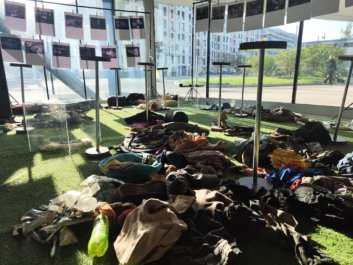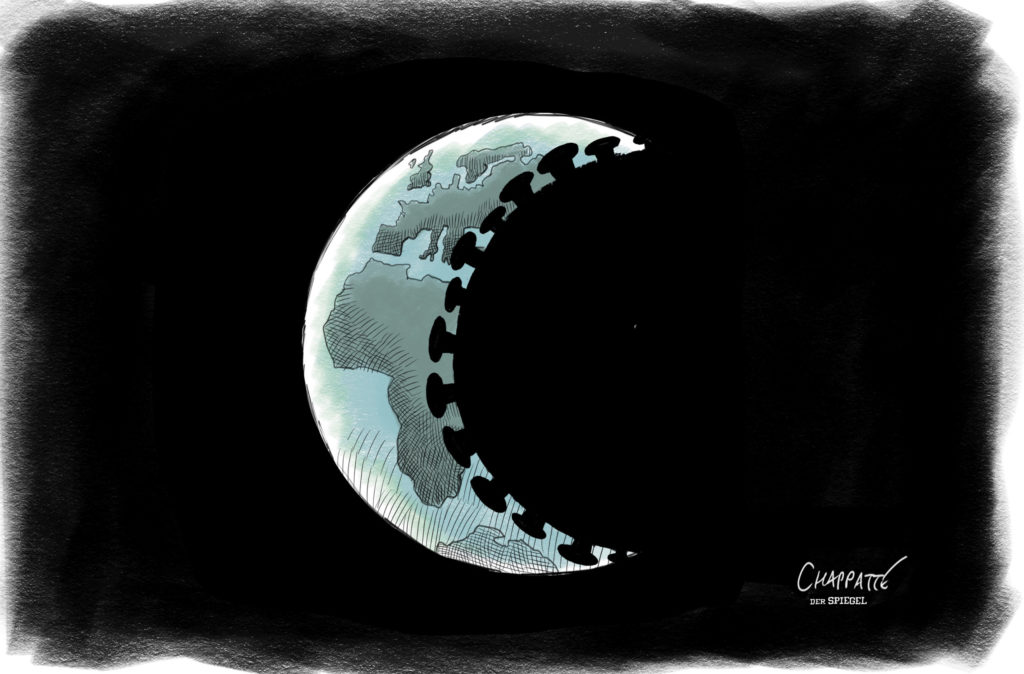Arts and the Study of the International
The Garden of the (In)visible
 The Garden of the (In)visible, Geneva, November 2024. © Alessandro Monsutti
The Garden of the (In)visible, Geneva, November 2024. © Alessandro MonsuttiIn line with Danto’s and Latour’s invitation to see art as a way of being and acting in the world, the installation The Garden of the (In)visible, co-created with my colleagues Roberta Altin, Giuseppe Grimaldi and Katja Hrobat Virloget, staged artefacts collected along the so-called Balkan Route, at the borders between Croatia, Slovenia and Italy. Here, objects are clearly social agents: they render visible people who were largely invisibilised. The installation was presented in public spaces and even on the streets, drawing attention to a socially sensitive situation, intentionally inviting polemic among people who might disagree in a way that participants in an academic conference would not. The process was participatory at each of its various stages: First, collecting the artefacts involved local authorities and activists, students and professors from the various universities of the region. Then, the installation was accompanied by events that brought together migrants who had taken the Balkan Route, people living near the various borders, and all those who joined the collect.
In this project, the differences between social sciences and art, but also between investigator and investigated, between curator and visitor, fade. It was not about communicating the work of social scientists to a broader audience but rather creating – beyond the narrow circle of university professors and students – a new epistemic and political community. We were modestly following Latour’s footsteps, making public debate more accessible and challenging taken-for-granted assumptions, but, more importantly, we hoped above all to open up new possibilities for action and coexistence.
Alessandro Monsutti



